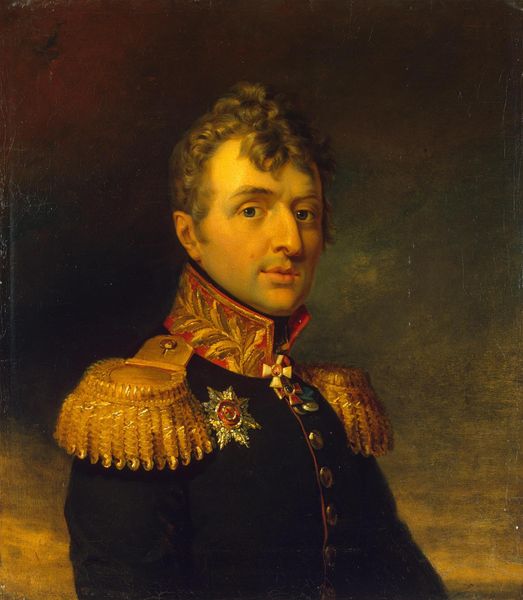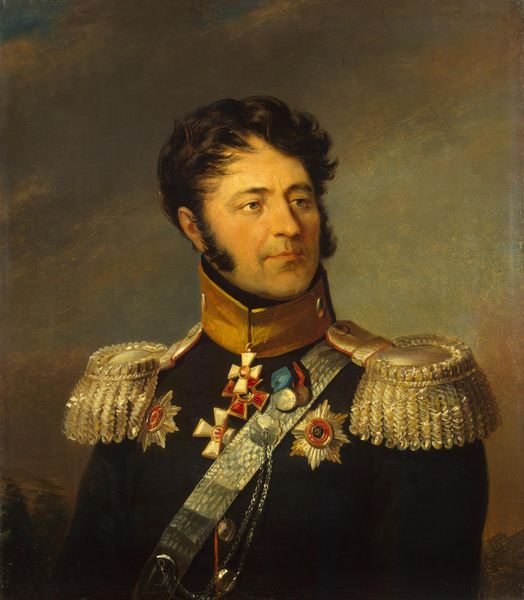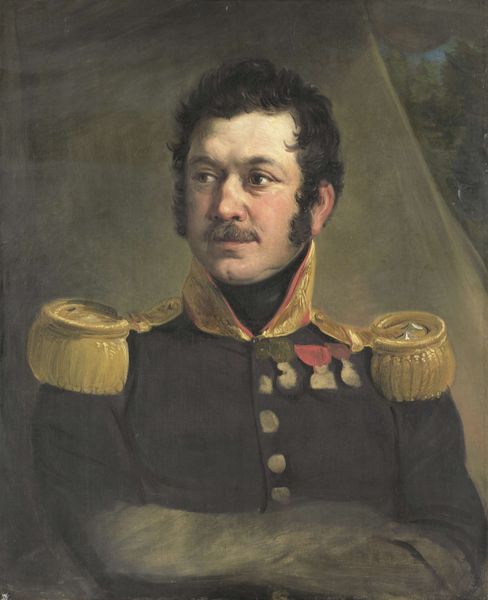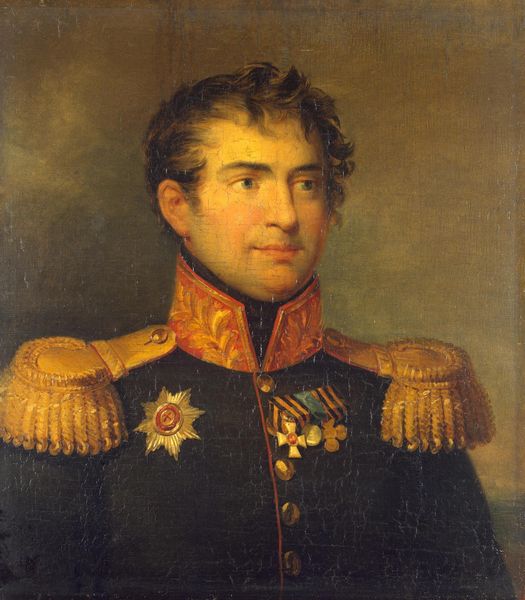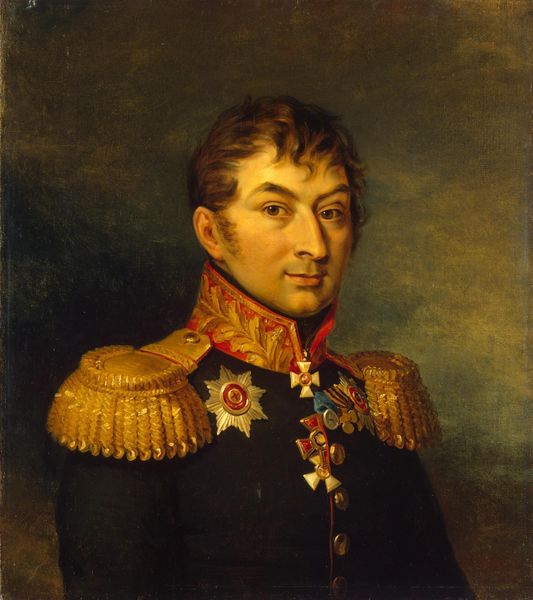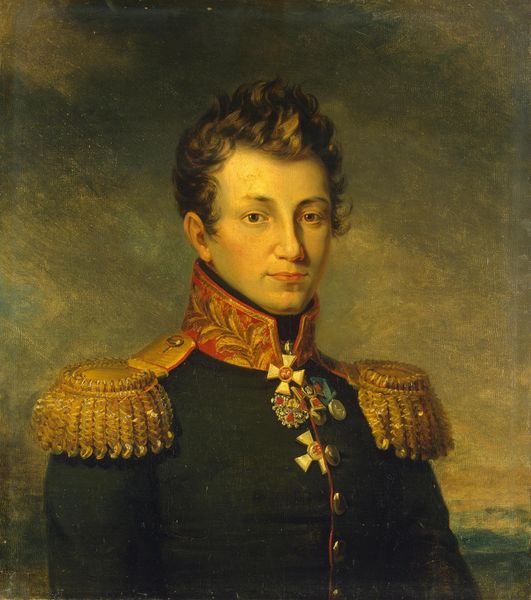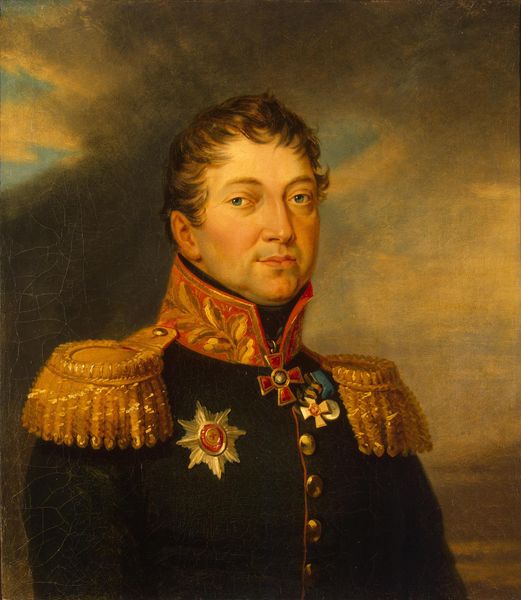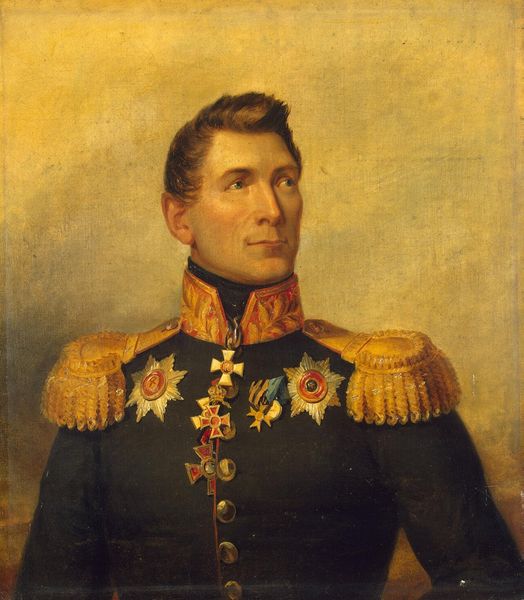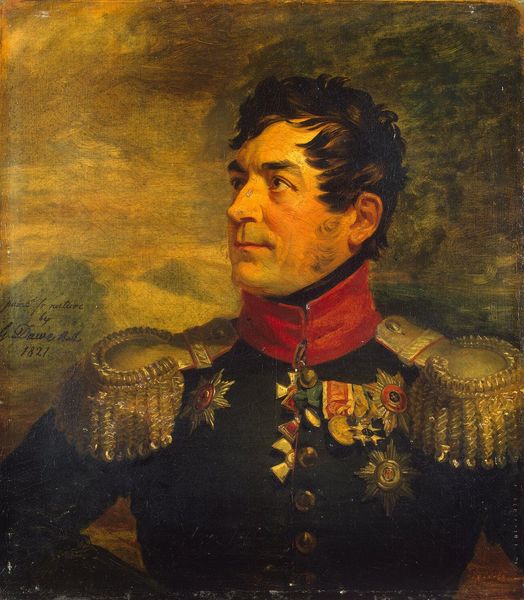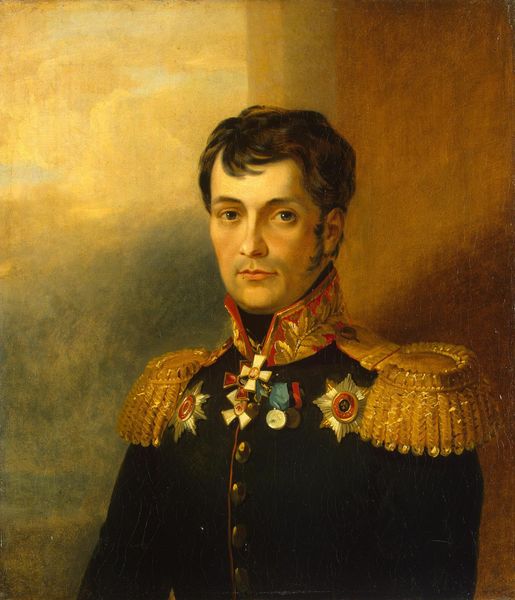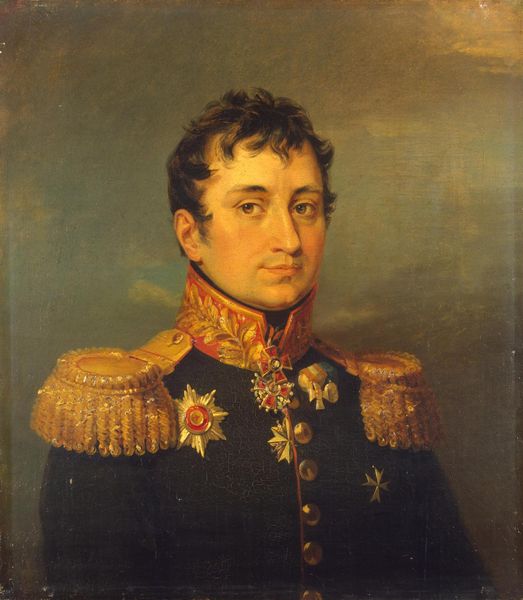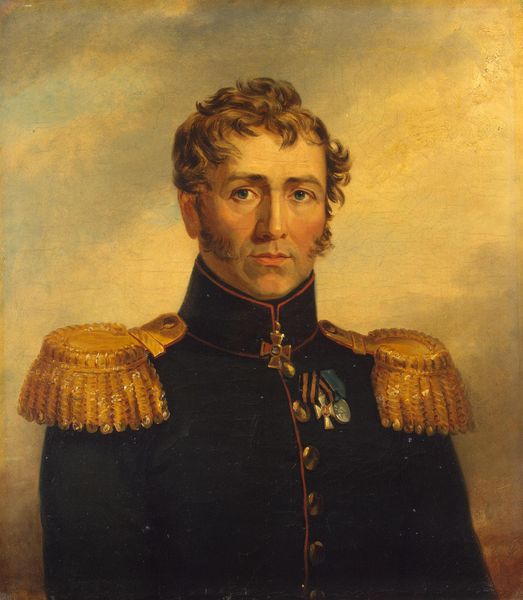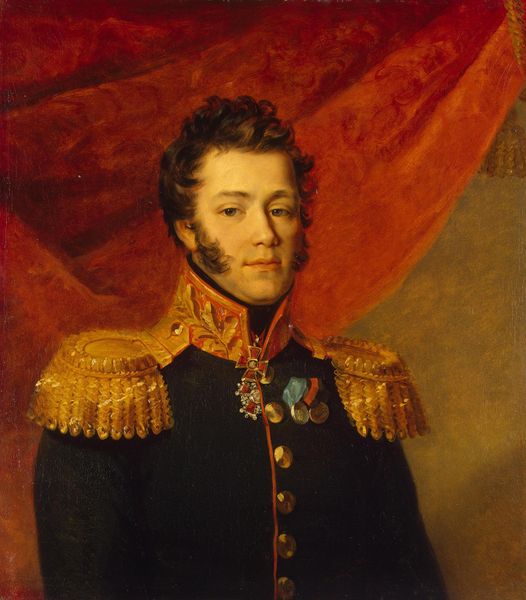
#
character portrait
#
portrait reference
#
portrait head and shoulder
#
animal drawing portrait
#
portrait drawing
#
facial portrait
#
portrait art
#
fine art portrait
#
celebrity portrait
#
digital portrait
Dimensions: 115 x 97 cm
Copyright: Public domain
Editor: So here we have Raden Saleh's portrait of *Johannes Graaf van den Bosch*, painted in 1836. The detail in the uniform is incredible, almost photographic! The overall impression is one of authority, but there's also a kind of stillness, almost a melancholy, in his eyes. What do you see in this piece? Curator: Well, on the surface, it's a formal portrait, commissioned to project power. But beneath that veneer, it reveals the complex colonial relationship between the Netherlands and the Dutch East Indies. Bosch was the Governor-General, effectively ruling the Indies. Editor: And Saleh being Indonesian himself...that adds another layer, doesn't it? Curator: Precisely! Consider who commissions these works and why. Saleh’s position as a court painter gives him access but also puts constraints on his artistic choices. He’s navigating a politically charged environment, subtly embedding his own commentary. The almost hyper-realistic style adopted also served to "prove" his artistic skill using a European style which would in turn legitimize him and the art of his homeland in European eyes. Editor: So, the seemingly objective portrait is actually a site of negotiation, reflecting the power dynamics of the time? It is indeed complex. The second figure to the left also seems very important, do you think the commissioner made this request of Saleh? Curator: Absolutely. It raises important questions about representation and agency. What does it mean for Saleh to depict the colonizer? How did audiences at the time perceive this interplay of power and identity? It's less about the man himself, more about the structures he represents, and how they are being viewed, negotiated, and challenged through art. Editor: I never thought a portrait could hold so much history. I appreciate learning to see it from this angle. Curator: Indeed. Art can serve as a time capsule and a powerful tool for socio-political interpretation, and understanding how and why they were constructed as such. It reminds us that even the most seemingly straightforward images are embedded in larger narratives of power, culture, and identity.
Comments
No comments
Be the first to comment and join the conversation on the ultimate creative platform.
